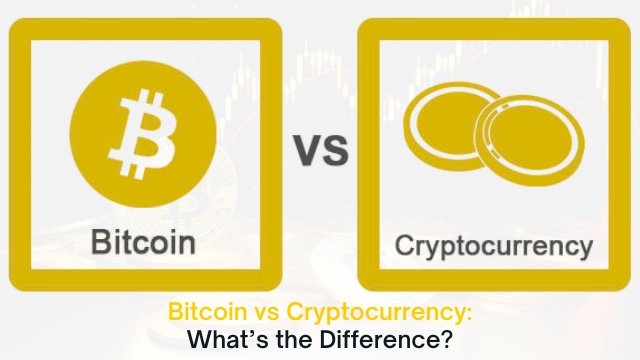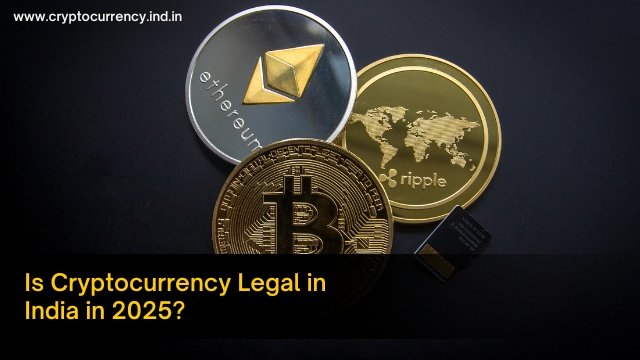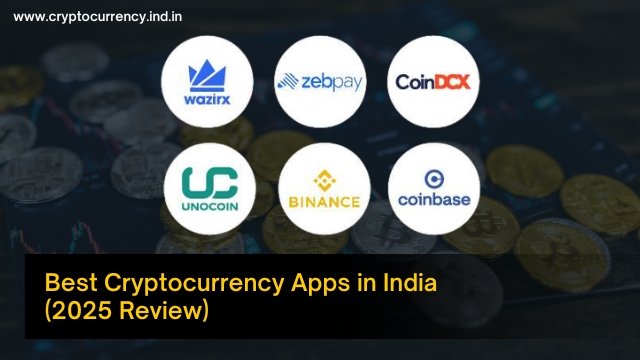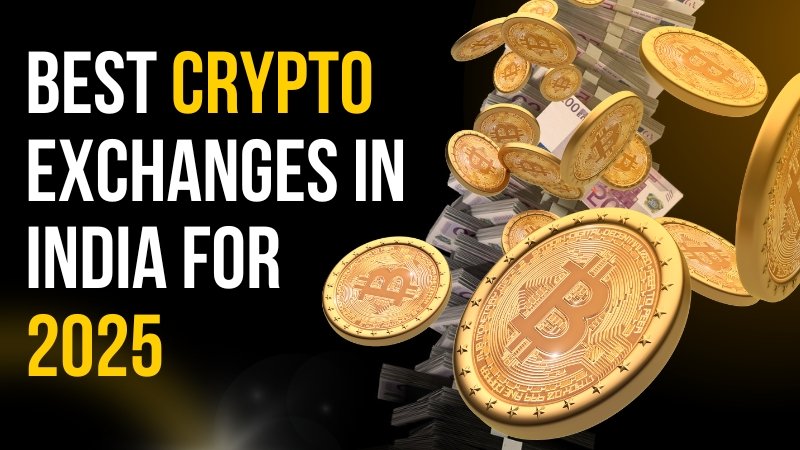
Why Cryptocurrency Matters in India
Cryptocurrency has become a serious topic of interest in India. From students and young professionals to full-time investors, an increasing number of people are becoming aware of digital currencies like Bitcoin, Ethereum, and Solana. It’s not just about making money quickly — many see it as a new way of thinking about saving, spending, and investing.
India has always been quick to use new technology, and digital finance is growing fast. Thanks to affordable smartphones, internet access, and online payments, it’s now much easier for anyone to get started with cryptocurrency. People are using apps and exchanges to buy and sell crypto from the comfort of their homes.
One of the main reasons people are drawn to cryptocurrency is the sense of control it offers. Unlike regular bank accounts, cryptocurrency enables you to manage your own money without requiring approval from banks or intermediaries. At a time when prices are rising and traditional savings offer low returns, many are looking at crypto as a new way to grow their money.
India is also home to many developers and startups who are creating tools and services based on blockchain, the technology behind cryptocurrency. This is opening up new opportunities for work, business, and innovation in the country.
Of course, there are still some concerns. People want clear rules, better safety, and more support when using these platforms. But even with these challenges, it’s clear that cryptocurrency is becoming a part of daily life for many Indians. Learning how it works is now important for anyone who wants to understand the future of finance.
In the rest of this guide, we’ll explain everything you need to know — how cryptocurrency works, how to invest safely, the best apps to use, and what to expect going forward.
Bitcoin vs Cryptocurrency: What’s the Difference?

Many people new to the crypto world often think that Bitcoin and cryptocurrency are the same thing. It’s an easy mistake to make, but there’s an important difference between the two, and knowing it can help you make better choices if you’re planning to invest or learn more about digital money.
Bitcoin is the first and most popular cryptocurrency. It was launched in 2009 by someone known as Satoshi Nakamoto, and it introduced a completely new idea — money that isn’t controlled by banks or the government. Instead of being printed or managed by a central authority, Bitcoin runs on a system called blockchain, which allows people to send and receive money directly, with every transaction recorded and verified by a network of computers.
But Bitcoin is just one type of cryptocurrency. The word cryptocurrency refers to all types of digital currencies, and there are thousands of them now. Some of the most well-known ones include Ethereum, Ripple (XRP), Cardano, and Solana. Each of these has its technology and use. For example, Ethereum isn’t just used like money — it also helps developers build apps that run on the blockchain. Other coins are designed to make payments faster, improve privacy, or support games and digital platforms.
Think of it like this: if cryptocurrency is the full menu, Bitcoin is just one dish — the most famous one, but not the only one.
Another difference is how people use them. Bitcoin is often seen as a store of value, similar to gold. Many people buy it and simply hold it, hoping its value will increase over time. Other cryptocurrencies are more active in everyday use — powering apps, games, or earning systems.
Understanding the difference between Bitcoin and other cryptocurrencies helps you see the bigger picture. Bitcoin is a good place to start, but it’s only the beginning. As new projects continue to grow and more people get involved, the cryptocurrency space is expanding fast.
If you’re thinking about investing or just curious about how it all works, knowing where Bitcoin fits in is a great first step to understanding this new type of digital economy.
Is Cryptocurrency Legal in India in 2025?

Many people in India are still unsure whether investing in cryptocurrency is legal. With news stories, changing policies, and mixed opinions, it’s easy to get confused. But in 2025, the picture has become clearer, and the answer is more straightforward than before.
To start with, cryptocurrency is not banned in India. You can legally buy, sell, and hold digital currencies like Bitcoin, Ethereum, and others. No laws are stopping Indian citizens from owning cryptocurrency. As long as you’re using a registered exchange or wallet app that follows government rules, you’re on safe ground.
However, it’s important to know that cryptocurrency is not legal tender. This means you can’t use it to pay for goods or services in shops like you do with the Indian Rupee. The Reserve Bank of India (RBI) has made it clear that crypto is not a replacement for regular currency. But it can be used as an investment, just like gold or shares.
In recent years, the Indian government has moved toward regulating crypto instead of banning it. They’ve introduced a 30% tax on profits from cryptocurrency and a 1% TDS (Tax Deducted at Source) on each transaction. These rules show that the government now treats cryptocurrency as a taxable digital asset, not something illegal.
There are also ongoing discussions about a full set of crypto regulations. These would aim to protect users, prevent fraud, and make things clearer for everyone involved. While these rules are still being developed, it’s clear that India is taking cryptocurrency seriously and working toward better control — not shutting it down.
At the same time, India has launched its own Digital Rupee (CBDC) — a digital version of the Rupee created by the RBI. It’s different from regular cryptocurrencies because it’s issued by the central bank, but it shows the country’s growing interest in digital finance and blockchain technology.
So, is cryptocurrency legal in India in 2025? Yes — you can invest, trade, and hold crypto legally, as long as you follow tax rules and use trusted platforms. While the rules may continue to develop, it’s clear that cryptocurrency is becoming part of India’s financial future, slowly but steadily.
How to Invest in Cryptocurrency in India (Step-by-Step Guide)

For many Indians, the idea of investing in cryptocurrency still feels complex or risky. But the truth is, getting started is much easier than it seems—especially if you follow a clear, step-by-step approach. Whether you’re looking to invest ₹1,000 or ₹1 lakh, the process is largely the same. Here’s how you can begin your journey into cryptocurrency investment in India safely and confidently.
Step 1: Understand the Basics of Cryptocurrency
Before putting your money into any digital asset, take some time to understand what cryptocurrency is. Learn how blockchain works, what gives cryptocurrencies their value, and the difference between coins like Bitcoin, Ethereum, and altcoins. You don’t need to become a tech expert, but basic knowledge will help you avoid scams and make smarter decisions.
Step 2: Choose a Trusted Cryptocurrency Exchange
In India, several cryptocurrency exchanges are legal, safe, and user-friendly. Popular options include platforms like CoinDCX, WazirX, and CoinSwitch. These apps let you buy, sell, and hold cryptocurrencies using Indian Rupees. When choosing a platform, check their security features, fees, user reviews, and whether they offer support for multiple coins.
Step 3: Complete KYC Verification
All legal exchanges in India require KYC (Know Your Customer) verification. This means you’ll need to submit a valid ID like Aadhaar or PAN card, along with a selfie and sometimes a bank statement. It usually takes only a few minutes to get approved, and this step is essential for both compliance and account security.
Step 4: Deposit Funds
Once your account is verified, you can deposit INR into your exchange wallet using UPI, net banking, or other payment methods. Most platforms accept small amounts, so you don’t need a large initial investment to get started. Just make sure to begin with an amount you’re comfortable risking.
Step 5: Choose the Right Cryptocurrency
Don’t just buy what’s trending. Take time to research different cryptocurrencies. Bitcoin and Ethereum are often seen as safer options due to their large market caps and stability. If you’re exploring altcoins, look into the project behind the coin—what problem it solves, who the team is, and how active the development is.
Step 6: Make Your First Purchase
Once you’ve decided which coin to invest in, you can place a buy order on the app. The process is as simple as online shopping. You choose the amount you want to invest, confirm the price, and your crypto will be added to your portfolio instantly.
Step 7: Store Your Cryptocurrency Safely
After purchasing, you can either leave your coins in the exchange’s wallet or move them to a personal crypto wallet. For long-term storage and added security, many investors prefer using hardware wallets, which are offline and immune to hacking.
Step 8: Track, Learn, and Stay Updated
Crypto markets are volatile. It’s important to track your investments, but avoid checking prices every minute. Instead, set clear goals, be patient, and continue learning. Follow trusted news sources, watch regulatory developments in India, and always think long-term.
Step 9: Pay Your Taxes
In India, profits from cryptocurrency investments are subject to a flat 30% tax, plus 1% TDS on transactions. Keep track of your trades and profits, and make sure to report them when filing your income tax returns.
Investing in cryptocurrency isn’t about getting rich overnight—it’s about understanding a new financial system and being part of its growth. With the right knowledge, tools, and discipline, anyone in India can become a confident crypto investor.
Best Cryptocurrency Apps in India (2025 Review)

With the growing popularity of cryptocurrency in India, several trading apps have emerged to make buying, selling, and investing in digital assets easier than ever. In 2025, these apps will ben’t just limited to tech-savvy users. They now offer simple interfaces, secure payment options, and local language support, making crypto investing more accessible to everyday Indians. Whether you’re a beginner or a seasoned trader, choosing the right app can make a big difference in your experience and safety.
One of the most popular names in India is CoinDCX. Known for its user-friendly interface and fast onboarding process, CoinDCX has positioned itself as a top choice for beginners. It allows users to start investing with as little as ₹100, and supports over 200 cryptocurrencies. The app also offers features like recurring buy, price alerts, and educational content through its “DCX Learn” platform, making it ideal for those who want to grow their knowledge along with their portfolio.
Another widely used platform is WazirX, which has been a household name in Indian crypto circles for several years. WazirX gained popularity for its clean design and seamless integration with Binance, one of the largest global exchanges. This connection gives users access to a wider variety of coins and deeper liquidity. In 2025, WazirX continues to serve millions of users in India, offering flexible trading options, peer-to-peer (P2P) INR transactions, and a responsive mobile app that works well even on lower-end smartphones.
If you’re looking for simplicity and minimal fuss, CoinSwitch is worth considering. CoinSwitch started as a crypto aggregator but has evolved into a full-fledged crypto investment app tailored for Indian users. It doesn’t offer advanced trading tools, but its design focuses on simplicity. You won’t find complex charts here—just easy options to buy and sell, making it a great starting point for first-time investors who may feel overwhelmed by other platforms.
Another growing contender is ZebPay, one of the oldest crypto companies in India. ZebPay has recently revamped its platform, focusing more on security and long-term investing. With features like a lending program where users can earn interest on idle crypto, and multi-layered security, ZebPay is a solid option for users who are more cautious and looking for a reliable track record.
For users interested in global exposure, apps like Binance and Kraken are also accessible from India, although they require additional steps for INR deposits and KYC. These platforms offer advanced trading tools, lower fees, and access to hundreds of altcoins, but may not be ideal for beginners.
When choosing the best cryptocurrency app in India in 2025, consider what kind of investor you are. Do you prefer simplicity or advanced features? Are you looking for Indian rupee support or access to a global market? Whatever your style, the Indian crypto space now has something for everyone.
Most importantly, always use apps that are regulated, follow proper KYC procedures, and offer strong security features like two-factor authentication and cold wallet storage. With the right platform, your cryptocurrency journey in India can be not only profitable but also secure and stress-free.
Top 5 Cheapest Cryptocurrencies That Could Explode

When people think of cryptocurrency, the first names that usually come to mind are Bitcoin and Ethereum—but these giants are already expensive, and for many new investors, out of reach. That’s where cheap cryptocurrencies come in. These are lower-priced coins with strong fundamentals, real-world utility, or upcoming developments that make them potential breakout stars.
It’s important to remember that “cheap” doesn’t always mean “good.” A coin’s low price doesn’t guarantee massive returns. What truly matters is the combination of low price, high upside potential, and solid project backing. Here are five of the most promising and affordable cryptocurrencies in 2025 that many experts believe could explode in value over the coming years.
1. Shiba Inu (SHIB)

Often referred to as the “Dogecoin killer,” Shiba Inu has captured a massive following. While it started as a meme coin, the Shiba ecosystem has grown significantly, introducing features like Shibarium (its own Layer-2 blockchain), NFT support, and a decentralized exchange. With a price still far below one rupee, SHIB attracts investors looking to get in early before another big surge.
2. VeChain (VET)

VeChain is a low-cost cryptocurrency that focuses on supply chain and logistics solutions using blockchain. It’s already partnered with major companies in retail and manufacturing, making it one of the few low-priced coins with real-world business use. VET remains under ₹10 per coin, making it an attractive option for those seeking affordable, utility-based tokens.
3. Hedera (HBAR)

Hedera is not just another blockchain—it runs on a unique technology called hashgraph, which claims to be faster and more energy-efficient than traditional blockchains. Major companies like Google, IBM, and Tata Communications are part of its governing council. In 2025, HBAR continues to trade at a relatively low price, despite growing adoption and development.
4. Stellar (XLM)

Designed to make cross-border payments faster and cheaper, Stellar has been around for a while, but it’s still considered undervalued. The project is backed by real partnerships, including with financial institutions and governments in emerging markets. With XLM priced well below ₹100 and massive room for growth in global payments, it’s one to watch closely.
5. Polygon (MATIC)

While MATIC has seen significant growth, it’s still relatively affordable compared to giants like Ethereum. Based out of India, Polygon has become a major player in the world of scalable blockchain infrastructure. Its partnerships with major tech brands and integration into the Ethereum ecosystem make it a strong long-term investment—even for those with smaller budgets.
Each of these coins offers something different—whether it’s community hype, enterprise adoption, or tech innovation. But no matter how promising they seem, always remember the crypto market is unpredictable. Do your own research, diversify your investments, and never invest more than you can afford to lose.
Investing in low-cost cryptocurrencies with high upside can be exciting, but it’s also a long game. With the right timing and patience, these affordable digital assets might turn into tomorrow’s big winners.
Risks and Benefits of Crypto Investment

Cryptocurrency investment has become one of the most talked-about financial trends in India and around the world. For some, it has brought life-changing profits. For others, it has led to regret and losses. Like any form of investment, crypto comes with both risks and rewards, and understanding both sides is essential before you put your hard-earned money into digital assets.
1. The Benefits of Investing in Cryptocurrency
One of the biggest attractions of cryptocurrency is its potential for high returns. Unlike traditional assets like gold or fixed deposits, crypto markets move quickly. A coin’s value can surge dramatically in a short time, offering early investors huge gains. Coins like Bitcoin, Ethereum, and Solana have all seen massive growth over the years, turning small investments into sizable wealth.
Another benefit is ownership and control. Cryptocurrencies are decentralized, meaning no single government or bank controls your funds. Once you own crypto, you’re the sole authority over your wallet. This idea of financial freedom appeals to a growing number of Indians who are tired of high banking fees, slow transactions, and limited investment options.
Cryptocurrency also opens the door to global finance. With a simple smartphone and internet connection, anyone can invest, send, or receive money across borders instantly. For those who work freelance or internationally, this can be a huge advantage.
And let’s not forget transparency and technology. Most cryptocurrencies are built on blockchain, a system where every transaction is recorded publicly. This reduces the chances of fraud and makes everything traceable, unlike many traditional systems that operate behind closed doors.
2. The Risks of Investing in Cryptocurrency
While the upside is exciting, the risks are real—and sometimes painful. The biggest risk is volatility. Crypto prices can swing wildly within hours or even minutes. A coin that’s rising fast today could crash tomorrow without warning. This makes emotional investing very dangerous, especially for beginners who panic during price drops.
Another risk is the lack of regulation. In India, crypto is legal but not yet fully regulated. This means you don’t have the same legal protection as you would in stock markets or banks. If an exchange shuts down or gets hacked, your funds may be hard to recover.
Security is another concern. Unlike banks, there’s no customer service number if you lose your crypto wallet password or fall victim to phishing scams. Once a transaction is made, it’s irreversible. This makes it essential to follow best practices for storing and securing your digital assets.
There’s also the risk of misinformation and hype. With social media flooded with crypto content, it’s easy to fall into traps, chase the wrong coins, or trust influencers who don’t have real experience. Many scams are disguised as investment opportunities, and inexperienced users often lose money chasing the next “big thing.”
Lastly, taxation can catch many investors off guard. In India, crypto profits are taxed at 30%, and each transaction may be subject to a 1% TDS. Not reporting this income correctly can lead to penalties or legal trouble.
3. Striking the Right Balance
Crypto can be a powerful addition to your financial portfolio—but only when handled wisely. The key is to educate yourself, start small, diversify your investments, and treat it like any serious financial decision. Don’t let greed or fear drive your choices.
If you understand both the potential and the pitfalls, cryptocurrency can be more than just a trend. It can become a long-term asset that grows with your financial journey.
How Does Cryptocurrency Work?

To understand how cryptocurrency works, you first need to forget how traditional money functions. In the regular world, we rely on banks, government institutions, and centralized systems to send, receive, and store money. Cryptocurrency removes all of that. Instead of trusting a bank to keep track of your money, you rely on technology—specifically, something called blockchain.
At its core, cryptocurrency is digital money that operates without any central authority. It’s built on blockchain technology, which is like a public digital ledger. Every time someone sends or receives cryptocurrency, the transaction is recorded on this blockchain, and anyone in the world can view it. That’s what makes it transparent and tamper-proof.
Let’s say you want to send Bitcoin to a friend. Instead of using a bank, you use a crypto wallet—a mobile app or software that holds your cryptocurrency. You enter your friend’s wallet address, choose the amount, and hit send. This transaction is then verified by a network of computers around the world, called miners or validators. Once verified, the transaction is added to the blockchain and becomes permanent.
This process is decentralized, meaning no single person or company controls the network. That’s one of the reasons why cryptocurrency is considered more secure and transparent than traditional systems. It also means that no government can freeze your crypto wallet or reverse your transactions.
Different cryptocurrencies work in slightly different ways. For example, Bitcoin uses a process called proof-of-work, where miners solve complex puzzles to validate transactions. Ethereum, on the other hand, is moving towards proof-of-stake, which is faster and uses less energy. But the basic idea is the same: computers validate and record transactions on a shared public network.
Because of this technology, cryptocurrencies can be used for more than just payments. They can power apps, create smart contracts, store digital art, and much more. That’s why many people see crypto not just as money, but as the future of the internet itself.
In short, cryptocurrency works by removing the middleman, using blockchain to verify transactions, and giving you full control over your digital assets. It’s fast, secure, and borderless — and it’s changing how people interact with money, especially in tech-forward countries like India.
Cryptocurrency and Blockchain: What’s the Connection?

To truly understand cryptocurrency, you need to understand blockchain, because without it, cryptocurrency wouldn’t exist.
Think of blockchain as the backbone or the foundation on which all cryptocurrencies are built. It’s a special type of technology that records information in a way that is secure, transparent, and unchangeable. Imagine a digital ledger or notebook that keeps a permanent record of every transaction ever made—and that notebook is not owned by a single person or organization, but by thousands of computers across the world.
When someone sends or receives cryptocurrency, like Bitcoin or Ethereum, that transaction is recorded on a blockchain network. The network checks to make sure the transaction is real, confirms that the person sending the money actually owns it, and then adds it to a block of data. That block is then linked to the previous block, creating a chain—hence the name, blockchain.
What makes blockchain powerful is its decentralized nature. No single person, bank, or government controls it. That means it’s not only harder to hack or manipulate, but also more transparent, because everyone on the network has access to the same data.
In simpler terms, cryptocurrency is the money, and blockchain is the system that keeps it safe and running smoothly.
It’s also important to know that blockchain isn’t just used for cryptocurrency. The same technology is now being used in many industries—like supply chains, healthcare, real estate, and even voting systems—to increase security and reduce fraud.
But in the world of crypto, blockchain is what makes digital currencies like Bitcoin work without needing banks, middlemen, or any centralized authority. It ensures that once a transaction happens, it cannot be changed or reversed, and everyone can verify that it took place.
For investors and users in India, understanding this relationship is key. Blockchain is not just a buzzword—it’s the engine powering the entire cryptocurrency ecosystem. And the more you understand how it works, the better decisions you’ll make when it comes to buying, holding, or trading crypto.
About Cryptocurrency Trading

Cryptocurrency trading is one of the most active and fast-paced parts of the digital finance world. While some people buy crypto and hold it for the long term, many others take a more hands-on approach, buying and selling digital coins more frequently to take advantage of price changes. This is what we call crypto trading.
At its core, cryptocurrency trading works just like the stock market — you buy when prices are low and sell when they rise. But unlike traditional markets that close after business hours, crypto markets are open 24/7, which means trading can happen at any time of day or night. This constant movement creates more opportunities, but also more risks.
To get started with crypto trading in India, you need to sign up on a trusted exchange like WazirX, CoinDCX, or CoinSwitch. These platforms allow you to deposit Indian Rupees (INR), choose from hundreds of coins, and start trading. Most apps also offer real-time charts, price alerts, and different types of orders like limit, market, or stop-loss — tools that help traders make smarter decisions.
There are different ways to trade cryptocurrency. Some people are day traders, meaning they make multiple trades in a single day, trying to profit from small price movements. Others prefer swing trading, where they hold onto coins for days or weeks, aiming to catch a bigger trend. And then some long-term investors use trading platforms to buy, but don’t trade actively.
One key thing every trader must understand is volatility. Crypto prices can move quickly and unpredictably. While this offers the chance for high returns, it also means losses can happen just as fast. That’s why it’s crucial to learn how to read market trends, manage risk, and avoid emotional decisions.
In India, crypto trading is legal, but profits are taxed at 30%, and each transaction has a 1% TDS (Tax Deducted at Source). This makes it important for traders to keep track of their gains and report them properly at tax time.
For beginners, it’s best to start small, avoid leverage (borrowed money), and stick to well-known coins like Bitcoin and Ethereum. Over time, as you gain confidence and knowledge, you can explore more strategies and altcoins.
Crypto trading isn’t a get-rich-quick scheme — it’s a skill that takes time, patience, and continuous learning. But with the right tools, mindset, and discipline, it can be a valuable way to grow your digital wealth.
Cryptocurrency Best App: Which One Should You Use?

With so many platforms available, one of the most common questions people ask is: “What is the best app for cryptocurrency in India?” While the answer depends on your goals—whether you’re a beginner, investor, or active trader—there are a few apps that consistently stand out from the rest.
As of 2025, the best overall cryptocurrency app in India for most users is CoinDCX. It offers a strong balance of security, ease of use, and features tailored for Indian investors. The app supports a wide variety of cryptocurrencies, allows deposits in Indian Rupees via UPI or bank transfer, and follows strict KYC and compliance standards.
CoinDCX is especially good for beginners because of its clean layout, fast onboarding, and educational tools like DCX Learn, which helps users understand crypto before they invest. It also offers features like price alerts, recurring buys, and portfolio tracking—all useful for both short-term traders and long-term holders.
That said, if you’re a trader looking for more technical tools, WazirX might be the better fit. It offers detailed charts, spot trading, and integration with Binance, giving users access to a larger global market. WazirX also supports P2P (peer-to-peer) INR transactions, which is helpful when you want to buy USDT without using a bank.
For those who just want a simple, no-frills app to invest in a few coins without getting overwhelmed, CoinSwitch is another solid choice. It doesn’t offer advanced trading features, but it’s perfect for casual investors who want to buy and hold a few trusted cryptocurrencies without diving deep into charts and analytics.
If security is your top concern, ZebPay might appeal to you. It focuses on wallet safety, long-term holding, and even offers interest on some coins when you hold them in the app.
Ultimately, the “best” cryptocurrency app depends on your experience level and investment style. If you’re just starting out and want a reliable, all-in-one app, CoinDCX is widely considered the best choice in India right now. But every app has its strengths, and the right one for you will depend on your personal goals.
Before choosing any platform, make sure to verify their KYC process, transaction fees, supported coins, customer service, and withdrawal limits. And always enable two-factor authentication to keep your funds safe.
Cryptocurrency History: How It All Started

The history of cryptocurrency is not just about money—it’s about a revolution in how we think about trust, freedom, and finance. While the word “cryptocurrency” became popular only in the last decade, the concept has been in the making for much longer.
The story begins in the late 1980s and 1990s, when developers and cryptographers started working on the idea of digital money that could work without a central authority like a bank. Several early attempts were made, like DigiCash and Bit Gold, but none gained mainstream use because they couldn’t solve a major problem: how to prevent digital money from being copied or double-spent without using a central server.
That changed in 2008, when a person (or group) using the name Satoshi Nakamoto published a whitepaper titled “Bitcoin: A Peer-to-Peer Electronic Cash System.” This document introduced the idea of using a blockchain, a public, decentralized ledger that records every transaction transparently and permanently. In January 2009, the first-ever cryptocurrency, Bitcoin, officially launched.
At first, Bitcoin was only known among a small group of tech enthusiasts. It had no real value and was mostly used for experiments. The first recorded commercial transaction using Bitcoin was in 2010, when a programmer paid 10,000 BTC for two pizzas—a purchase that would be worth millions of dollars today.
As Bitcoin gained attention, more developers started creating their cryptocurrencies. These new digital coins were often called altcoins, short for “alternative coins.” Each tried to solve different problems or offer new features. One of the first major altcoins was Litecoin, followed by Ripple, Ethereum, and many others.
Ethereum, launched in 2015, was a turning point. It introduced the concept of smart contracts, which allowed developers to build decentralized applications (dApps) directly on the blockchain. This expanded the use of cryptocurrency far beyond just sending and receiving digital money.
Over the next few years, cryptocurrency became a global movement. Millions of people began investing, trading, and building businesses around it. In India, despite regulatory uncertainty, interest in crypto exploded, especially among young investors and tech-savvy professionals looking for alternatives to traditional finance.
Today, in 2025, the cryptocurrency world includes thousands of coins, tokens, platforms, and use cases, from online payments and gaming to NFTs and digital identity. What started as an underground project by anonymous coders is now a key part of the global financial conversation.
Understanding the history of cryptocurrency helps us see just how far the technology has come—and why so many people believe it’s not just a trend, but the future of money.
About Cryptocurrency in India

Cryptocurrency in India has evolved from a niche interest to a nationwide topic of discussion. What started as an underground trend followed by a handful of tech enthusiasts is now drawing attention from investors, startups, government authorities, and even everyday smartphone users across the country.
India’s journey with cryptocurrency has been anything but simple. In the early 2010s, Bitcoin and other digital currencies were largely unknown to the public. Only a small community of early adopters experimented with mining and trading. But as global awareness of crypto grew, so did interest in India, especially around 2017, when Bitcoin prices began to skyrocket.
By 2018, cryptocurrency had captured the imagination of Indian investors, but the legal environment became uncertain. The Reserve Bank of India (RBI) issued a ban that prevented banks from dealing with crypto businesses. This made it difficult for exchanges to operate, and many shut down or moved abroad. However, in March 2020, the Supreme Court of India lifted that ban, giving crypto trading a second chance in the country.
Since then, India’s cryptocurrency space has grown rapidly. Apps like WazirX, CoinDCX, CoinSwitch, and ZebPay made it easier than ever for Indians to buy and sell digital assets directly from their phones. Millions of users, especially young investors and people in tier 2 and tier 3 cities, began exploring cryptocurrency as an alternative investment.
At the same time, the Indian government began taking steps to regulate the market. While cryptocurrency is not considered legal tender, it is also not illegal. Investors are allowed to trade and hold crypto, but profits are taxed at a flat 30%, and a 1% TDS is applied on each transaction. These rules may seem strict, but they also signal that India is taking crypto seriously and working toward a clearer regulatory framework.
In 2025, cryptocurrency in India is in a phase of cautious growth. It’s not yet fully mainstream, but it’s no longer a mystery either. Awareness is spreading, educational content is increasing, and more Indians are beginning to see crypto as part of their long-term financial planning.
What makes India’s crypto scene unique is the combination of high mobile internet penetration, a young population, and a growing appetite for digital innovation. Whether it’s investing in coins, building blockchain apps, or exploring Web3 projects, Indians are becoming key players in the global crypto movement.
While challenges like regulation, scams, and volatility still exist, the future of cryptocurrency in India looks promising, especially for those who approach it with awareness, curiosity, and a willingness to learn.
Final Thoughts
Cryptocurrency is no longer just a trend or a buzzword — it’s becoming a real part of India’s digital financial landscape. From how it works to how it’s traded, invested, taxed, and used, crypto is influencing the way people think about money and ownership. As the market grows, so does the opportunity — but so does the responsibility to understand what you’re getting into.
Whether you’re a beginner trying to buy your first coin or a curious investor exploring new digital assets, learning about cryptocurrency is the first step toward making smart, informed decisions. India may still be shaping its regulations, but the foundation is already here, and those who educate themselves today will be the most prepared for what comes tomorrow.
Crypto isn’t about overnight success. It’s about understanding a new financial system that’s global, fast, and constantly evolving. And with the right knowledge, you can be part of that future confidently.
Frequently Asked Questions (FAQs) About Cryptocurrency
Q1. What is cryptocurrency, and how does it work?
Answer: Cryptocurrency is a form of digital money that operates without a central authority like a bank. It works through blockchain technology, where transactions are recorded across a decentralized network of computers, making them secure, transparent, and nearly impossible to tamper with.
Q2. Is cryptocurrency legal in India?
Answer: Yes, cryptocurrency is legal to buy, hold, and trade in India. While it’s not recognized as legal tender, it is treated as a taxable digital asset. Profits from cryptocurrency are taxed at 30%, and a 1% TDS is applied on transactions.
Q3. Which cryptocurrency is best to invest in for beginners?
Answer: For beginners, well-known cryptocurrencies like Bitcoin (BTC) and Ethereum (ETH) are considered more stable and easier to understand. These coins have been around longer, have large communities, and are supported by almost every crypto exchange in India.
Q4. How can I start investing in cryptocurrency in India?
Answer: To start investing, you’ll need to create an account on a trusted crypto app like CoinDCX, WazirX, or CoinSwitch. After completing your KYC, you can deposit INR and start buying cryptocurrencies directly from your smartphone.
Q5. Is cryptocurrency a safe investment?
Answer: Cryptocurrency carries both high potential and high risk. While blockchain technology is secure, the market is volatile and can change rapidly. Using trusted platforms, securing your wallet, and avoiding emotional trading are key to staying safe while investing in cryptocurrency.







